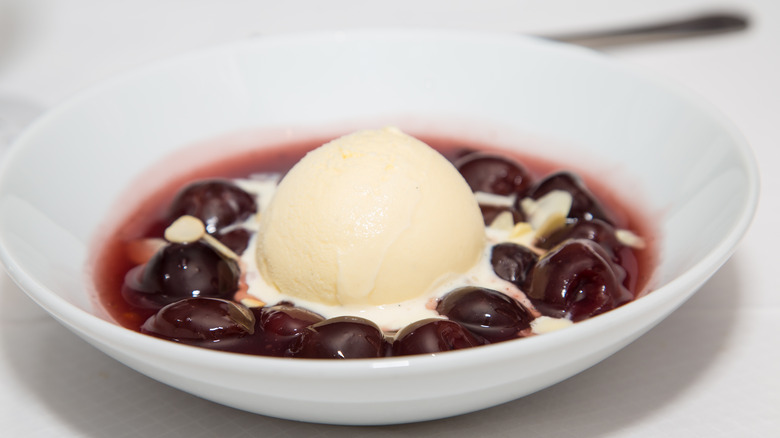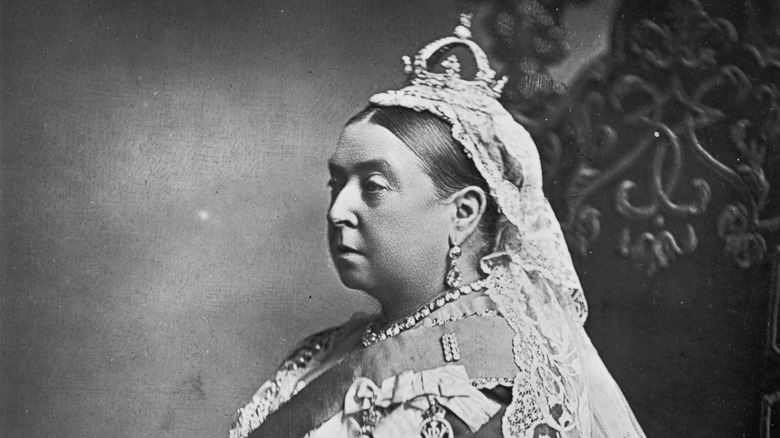The Royal Origin Story Of Cherries Jubilee Is Deliciously Fascinating
Unless you're dining at a French restaurant, or a swanky steakhouse where the waiters still wear white coats and gloves, you probably haven't seen cherries jubilee on a dessert menu. And yet, it appears that a revival of the dessert is underway (which is exciting, indeed). This classic treat consisting of sweet and sour cherries flambéed in brandy and served with a premium vanilla ice cream is simple yet sublime. Cherries jubilee was a creation of one of the greatest and most influential chefs in history, Auguste Escoffier, who created the dessert for none other than Queen Victoria in England.
In 1897, Queen Victoria celebrated 60 years on the throne with her diamond jubilee. All of the United Kingdom celebrated, and Escoffier himself developed cherries jubilee in honor of the momentous occasion. Interestingly, Escoffier had left his post at London's Savoy in March 1897 and headed to Paris to the newest Ritz hotel location. The queen's jubilee was celebrated in June of that year. A queen by duty, Queen Victoria loved to bake and cook as a hobby, and it was well known that she had quite an affinity for sweets. It's fitting, then, that his tribute recipe to her was a dessert.
A dish fit for a queen
During the mid-to-late 1800s, Escoffier had gained such a reputation for high end cuisine, that royalty from all over the world (including Denmark, Austria, England, Brazil, and Russia) would travel to his restaurants to experience his menus in posh places like Monte Carlo, Lucerne, Switzerland, and London. Other clientele included the crème de la crème of society. In other words, the rich and famous, some of whom Escoffier named dishes after. For example, the chef created his famous Peach Melba dessert for Australian opera singer Nellie Melba in 1893.
Escoffier's original cherries jubilee wasn't complicated in the ingredient realm, but it was certainly a show-stopper that required skill and safety. Fresh cherries, sugar, a thickener, and brandy were about all the recipe needed. What made the dessert extravagant was the fact that it was set on fire before the eyes of delighted diners. The ice cream wasn't added to the dish until later. It became a darling dessert of 1950s America, and chefs began taking liberties with the recipe, like adding citrus zest, warm spices such as cinnamon, and mixing up the liquors (rum, kirsch, and bourbon all work as well as plain brandy, the drink of aristocrats). One element that has remained is the fact that cherries jubilee is prepared and served tableside because of the fiery theatrics, much like bananas foster, crepes suzette, and baked Alaska are prepared.
Thankfully, the former dessert isn't reserved solely for royalty or the elite anymore as it can be made in any kitchen by a careful cook and, preferably, with a long match or good kitchen torch.

